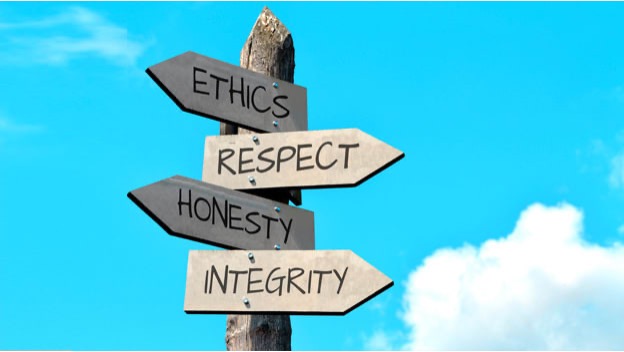Organizational culture is the lifeblood of any company. It shapes the way employees interact, make decisions, and perceive their roles within the team. It’s the invisible hand that guides the collective behavior of the workforce.
The Importance of Organizational Culture
Performance and Productivity:
A strong organizational culture creates an environment where employees feel engaged and motivated. When employees identify with their organization’s culture, they are more likely to align their personal goals with the company’s objectives, leading to increased productivity. They feel a sense of ownership and commitment, which drives them to perform at their best.
Employee Retention:
Organizational culture significantly impacts employee retention. Employees tend to stay longer with companies that provide a positive and supportive work environment. A culture that values its employees and recognizes their contributions fosters loyalty and reduces turnover rates. It also attracts top talent, as high-performing individuals are often drawn to organizations with positive cultures.
Conflict Resolution:
A well-defined culture provides a roadmap for conflict resolution. It sets the standards for behavior and expectations, helping to prevent misunderstandings and disputes. When conflicts do arise, a strong culture will guide the resolution process, ensuring that decisions are made in line with the company’s core values.

Brand Image:
Organizational culture extends beyond the company’s walls. It influences how the outside world perceives the company. A strong, positive culture can enhance a company’s reputation, making it more attractive to potential customers, partners, and employees. It can also differentiate the company from its competitors, providing a unique selling proposition.
Contributing Factors to Organizational Culture
Leadership:
Leaders play a pivotal role in shaping organizational culture. They set the tone through their behavior, decisions, and communication. They are responsible for establishing the company’s values, mission, and vision, and for ensuring these elements are integrated into every aspect of the organization. Their actions set an example for employees, influencing how they behave and interact.
Policies and Procedures:
The policies and procedures of an organization play a significant role in defining its culture. They set the guidelines for behavior and decision-making within the company. These policies and procedures should reflect the company’s core values and promote a positive work environment.
Work Environment:
The physical environment and work conditions can also contribute to the organizational culture. Factors such as office layout, dress code, and flexible working hours can influence the way employees interact and perceive the company. A positive work environment can foster a culture of collaboration, innovation, and respect.

Organizational Structure:
The structure of the organization, including its hierarchy and division of responsibilities, can significantly impact its culture. A flat structure may promote a culture of collaboration and equality, while a hierarchical structure may foster a more formal and authoritative culture.
Employee Behavior:
The behavior of employees also contributes to the organizational culture. This includes how they interact with each other, their work ethic, and their attitude towards the company. Employees who embody the company’s values and demonstrate positive behavior can reinforce the desired culture.

Company History and Traditions:
The history and traditions of a company can significantly influence its culture. Past experiences, successes, and failures can shape the beliefs and values of the organization. Traditions can foster a sense of continuity and belonging, strengthening the culture over time.
Communication:
The way information is shared and received within an organization plays a crucial role in shaping its culture. Open and transparent communication can foster a culture of trust and collaboration. It can also ensure that everyone is aligned with the company’s goals and values.
In a study titled “Factors contributing to the perpetration of workplace incivility: the importance of organizational aspects and experiencing incivility from others,” researchers found that organizational variables were related to the perpetration of incivility.

A direct relationship was found between being uncivil and organizational change, job insecurity, low social support from co-workers, and high job demands. This study underscores the importance of a positive organizational culture in maintaining civility and respect in the workplace.
Organizational culture is a vital aspect of any company. It influences every facet of the organization, from productivity and employee retention to conflict resolution and brand image. Therefore, understanding the factors that contribute to organizational culture is crucial for any business looking to create a positive and productive work environment.
The Role of Organizational Culture in Change Management
Facilitates Change:
Organizational culture plays a pivotal role in change management. A culture that is open to change can help organizations adapt to new situations and challenges more effectively. It encourages employees to embrace change rather than resist it. This adaptability is crucial in today’s fast-paced business environment, where companies must constantly evolve to stay competitive.
Promotes Learning and Growth:
A culture that encourages learning and personal growth can help organizations stay ahead of the curve. It fosters an environment where employees are motivated to acquire new skills and knowledge. This continuous learning culture can lead to innovation, improved performance, and a competitive edge in the market.

Influences Ethical Behavior:
Organizational culture can significantly influence the ethical behavior of employees. A culture that emphasizes integrity and fairness can promote ethical decision-making and behavior among employees. It can help prevent unethical practices and promote a reputation for corporate responsibility.
How to Cultivate a Positive Organizational Culture
Cultivating a positive organizational culture requires a strategic approach and commitment from all levels of the organization. Here are some steps organizations can take:
Define Your Values:
Clearly defining your values is the first step in cultivating a positive organizational culture. These values should guide all decisions and actions within the organization. They should reflect what the organization stands for and believes in.

Lead by Example:
Leaders play a crucial role in shaping organizational culture. They should embody the organization’s values and set the standard for behavior. Their actions and attitudes can significantly influence the culture of the organization.
Encourage Open Communication:
Open and transparent communication can foster trust and collaboration. Encourage employees to share their ideas and feedback, and ensure that communication from leadership is clear and consistent. This can help create a culture where everyone feels heard and valued.
Recognize and Reward:
Recognize and reward employees who embody the organization’s values. This can reinforce positive behavior and motivate others to do the same. Recognition can come in many forms, from verbal praise to promotions and bonuses.
Promote Teamwork:
Promote a culture of teamwork and collaboration. Encourage employees to work together towards common goals. This can foster a sense of unity and cooperation, which can enhance productivity and morale.
Invest in Employee Development:
Invest in training and development opportunities for employees. This can help them grow professionally and contribute more effectively to the organization. It can also demonstrate that the organization values its employees and is invested in their success.

Handle Conflicts Constructively:
Conflicts are inevitable in any organization. Handle them constructively and use them as opportunities for learning and growth. This can help maintain a positive work environment and prevent conflicts from damaging the culture.
Celebrate Success:
Celebrate successes, no matter how small. This can boost morale and motivate employees to continue working hard. It can also foster a culture of positivity and achievement.
Conclusion
In a rapidly changing business environment, a strong and positive organizational culture can serve as a steady compass, guiding the organization and its employees towards shared goals and success. It’s an investment that yields significant returns in the form of increased performance, employee satisfaction, and overall business success. Therefore, understanding its importance and the factors that contribute to it is crucial for any business looking to create a positive and productive work environment.
Remember, culture is created collectively, and it’s up to every member of the organization to contribute to its cultivation and preservation.

